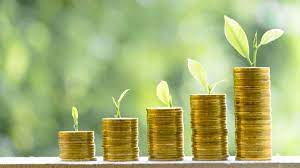Today Current Affairs: 11th November 2022 for UPSC IAS exams, State PSC exams, SSC CGL, State SSC, RRB, Railways, Banking Exam & IBPS, etc
Table of Contents
Guidelines For Uplinking And Downlinking Of Television Channels In India, 2022:

The Ministry of Information & Broadcasting has issued guidelines and specified new uplinking and downloading rules.
- Earlier, the Ministry of Information and Broadcasting (I&B) had issued an advisory stating that any kind of broadcasting be done only through Prasar Bharti.
New Provisions:
- Television channels will have to telecast content in the national interest or public service every day for 30 minutes.
- Nonetheless, these obligations will not be applicable for sports, wildlife, and foreign channels.
- The themes of national importance include,
- Education and spread of literacy
- Agriculture and rural development,
- Health and family welfare,
- Science and technology,
- Welfare of women
- Welfare of the weaker sections of society
- Protection of the environment and of cultural heritage and national integration.
- Requirement for seeking permission for live telecast of events has been done away with, only prior registration of events to be telecast live would be necessary,
- No requirement of prior permission for change of language or conversion of mode of transmission from Standard Definition (SD) to High Definition (HD) or vice versa, only prior intimation would be required.
- Companies would be allowed to uplink foreign channels from Indian teleports which would create employment opportunities and make India a Teleport-hub for other countries.
- Structure of the Guidelines has been systematized to avoid duplication and common parameters.
- The penalty clauses have been rationalized and separate nature of penalties have been proposed for different types of contraventions as against uniform penalty at present.
Dynamic Ground Water Resource Assessment Report:

According to the Dynamic Ground Water Resource Assessment Report for the entire country for the year 2022, groundwater extraction in India saw an 18-year decline.
- The assessment was carried out jointly by Central Ground Water Board (CGWB), States and Union Territories.
- Such joint exercises between the CGWB and States/Union Territories were carried out earlier in 1980, 1995, 2004, 2009, 2011, 2013, 2017 and 2020.
Highlights:
- The total annual groundwater recharge for the entire country is 437.6 billion cubic metres (bcm) and annual groundwater extraction for the entire country is 239.16 bcm.
- Out of the total 7,089 assessment units in the country, 1,006 units have been categorised as “over-exploited” in the report.
- By comparison, an assessment in 2020 found that the annual groundwater recharge was 436 bcm and extraction 245 bcm.
- In 2017, recharge was 432 bcm and extraction 249 bcm. The 2022 assessment suggests that groundwater extraction is the lowest since 2004, when it was 231 bcm.
- The analysis indicates increase in ground water recharge which may mainly be attributed to increase in recharge from canal seepage, return flow of irrigation water and recharges from water bodies/tanks & water conservation structures.
- The improvement in ground water conditions in 909 assessment units in the country when compared with 2017 assessment data.
- In addition, overall decrease in number of over-exploited units and decrease in stage of groundwater extraction level have also been observed.
India’s Sovereign Green Bonds Framework:

The Union Minister for Finance & Corporate Affairs has approved the final Sovereign Green Bonds Framework of India.
- Sovereign Green Bonds will be issued for mobilising resources for green projects.
- The Framework comes close on the footsteps of India’s commitments under “Panchamrit” as elucidated by the Prime Minister at Conference of Parties (COP) 26 at Glasgow in November 2021.
- It will further strengthen India’s commitment towards its Nationally Determined Contribution (NDCs) targets, adopted under the Paris Agreement.
- Green Finance Working Committee (GFWC) was constituted to validate key decisions on issuance of Sovereign Green Bonds.
- The framework has been rated ‘Medium Green’, with a “Good” governance score by a Norway-based independent second opinion provider CICERO.
- The ‘Medium Green’ rating is assigned ‘to projects and solutions that represent significant steps towards the long-term vision, but are not quite there yet.
- All fossil fuel-related projects have been kept out of the framework, along with biomass-based renewable energy projects that rely on feedstock from ‘protected areas’.
Sovereign Green Bonds:
- Green bonds are issued by companies, countries and multilateral organisations to exclusively fund projects that have positive environmental or climate benefits and provide investors with fixed income payments.
- The projects can include renewable energy, clean transportation and green buildings, among others.
- Proceeds from these bonds are earmarked for green projects. This is unlike standard bonds, the proceeds of which can be utilized for various purposes at the discretion of the issuer.
- By the end of 2020, 24 national governments had issued Sovereign Green, Social and Sustainability bonds totalling a cumulative USD 111 billion dollars, according to the London-based Climate Bonds Initiative.
Marrakech Partnership For Global Climate Action:

Marrakech Partnership for Global Climate Action recently launched Yearbook of Global Climate Action 2022.
- This Yearbook of Global Climate Action, the sixth of the series, reviews the state and scope of global climate action in 2022.
- It outlines what is needed to accelerate sectoral systems transformation, features case studies of real-world climate action projects, highlights some key global climate action topics particularly regionalization and accountability and presents the High-Level Champions’ contribution to these issues.
Marrakech Partnership for Global Climate Action:
- The Marrakech Partnership for Global Climate Action supports implementation of the Paris Agreement by enabling collaboration between governments and the cities, regions, businesses and investors that must act on climate change.
- It was launched in November 2016 at COP 22.
- Its main objective is to strengthen collaboration between governments and key stakeholders to immediately lower emissions and increase resilience against climate impacts.
- These actions will be guided by the long-term goals of the Paris Agreement and undertaken in the context of the 2030 Agenda for Sustainable Development.
What Is Greenwashing?

The United Nations Secretary General has warned private corporations to desist the practice of Greenwashing and mend their ways within a year.
- The term greenwashing was first used in 1986 by Jay Westerveld, an American environmentalist and researcher.
- Greenwashing is the practice in which firms and governments mark all kinds of activities as climate-friendly, as something that would lead to emissions reduction, or avoidance of emissions.
- Many of these claims are unverifiable, misleading, or dubious.
- While it helps in boosting the image of the entity, they do nothing in the fight against climate change.
- Several multinational corporations, including oil giants like Shell and BP, and Coca Cola have faced accusations of greenwashing.
- Greenwashing is prevalent across a whole range of environmental activities.
- Developed countries are often accused of greenwashing their normal business investments in developing countries by highlighting climate co-benefits of the financial flows, sometimes with very little justification.
Energy Transition Accelerator (ETA) For Climate Finance:

U.S.A recently unveiled a new carbon offset scheme called Energy Transition Accelerator (ETA) for climate finance.
- It will be developed by the US along with the Bezos Earth Fund and the Rockefeller Foundation and receive inputs from public and private sectors.
- It is a new carbon offset plan that will allow companies to fund clean energy projects in developing countries and gain carbon credits that they can then use to meet their own climate goals, at least partly.
- According to U.S.A, the concept is to put the carbon market to work, deploy capital otherwise undeployable, and speed up the transition from dirty to clean power, for two puposes- to retire unabated coal fired power and accelerate renewables.
- The ETA is expected to deliver deeper and earlier emissions reductions, help developing countries achieve and strengthen their nationally determined contributions (NDCs) under the Paris Agreement, and help them advance broader sustainable development goals, including expanded energy access.
- The ETA is expected to operate through 2030, possibly extending to 2035.




